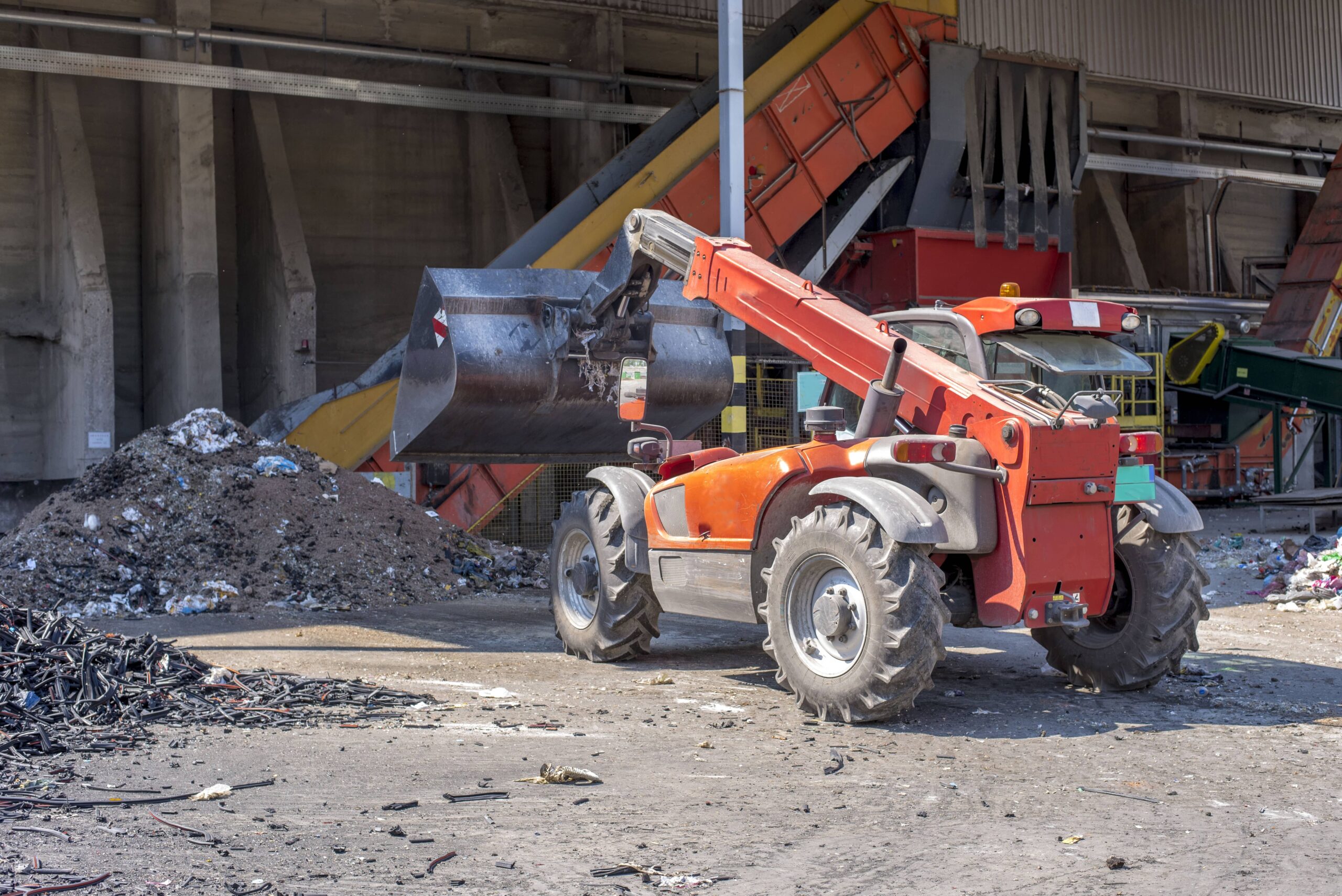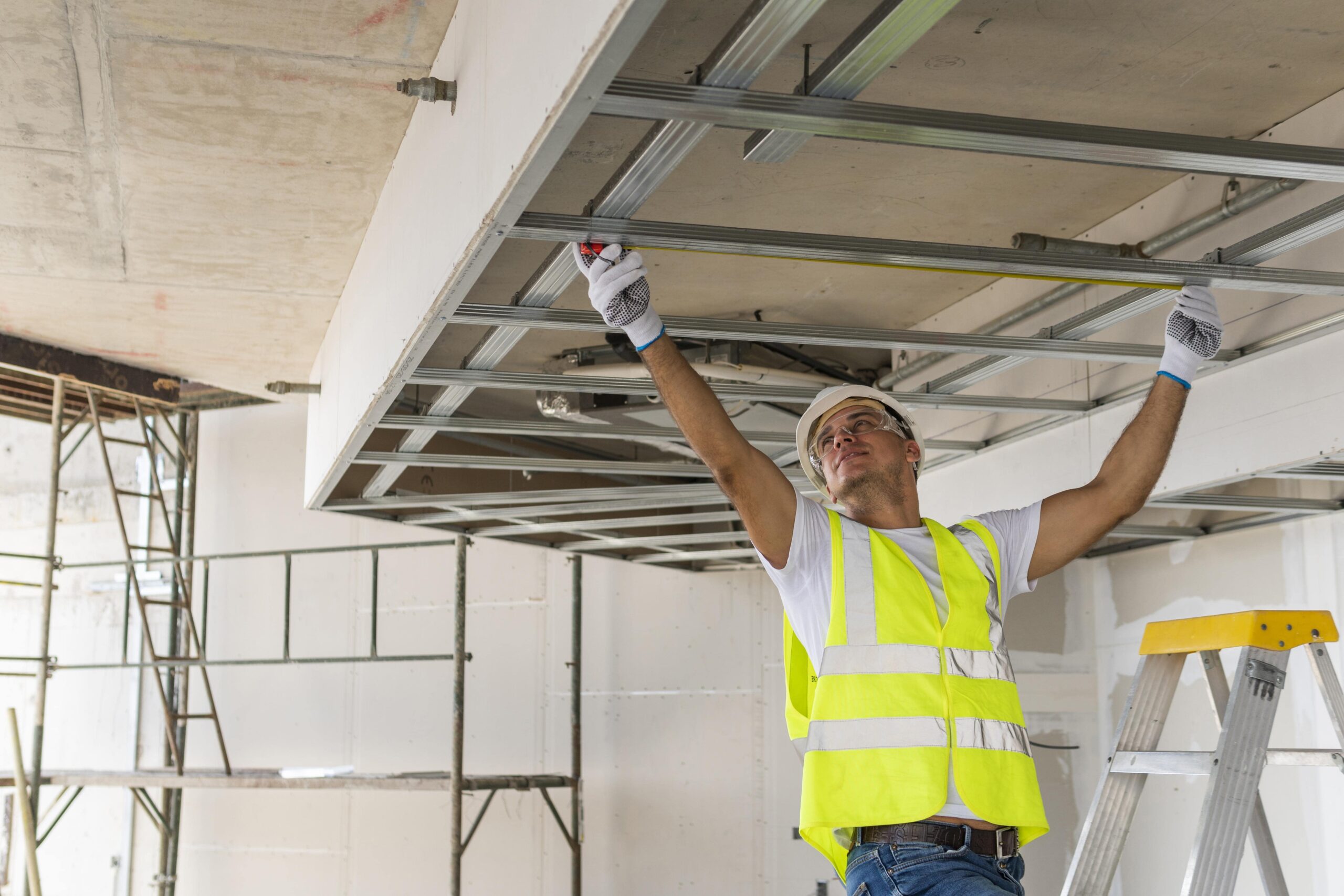
Demolition Plan for Homes: A Comprehensive Guide for Rebuilding A House
Planning on demolishing a house requires meticulous attention to detail and strategic foresight. Understanding the critical components of a demolition plan is essential for ensuring safety, efficiency, and compliance with regulations. From thorough site assessments to environmental impact considerations, every aspect demands careful consideration. This blog post from certified home builders in Sydney delves into the key elements of an effective demolition plan, providing valuable insights for professionals in the construction and engineering industries.
Demolition plans encompass various vital aspects such as safety protocols, environmental sustainability, waste management strategies, and regulatory adherence. By exploring these facets comprehensively, this post aims to equip readers with the knowledge necessary to develop robust and compliant demolition plans that align with industry best practices.
Planning Your Demolition
Property Assessment
Before embarking on a demolition plan and house rebuild, it’s crucial to conduct a thorough property assessment. This involves evaluating the structural integrity of the building and assessing its environmental impact. Identifying any hazardous materials present in the property is essential for ensuring safe and compliant demolition. For instance, if asbestos or lead-based paint is found, special procedures must be followed for their removal before demolition can proceed. The assessment helps in determining the best approach for demolition based on various factors such as building materials, location, and potential environmental impacts.
Selecting a Demolition Company Researching and comparing reputable demolition companies is an integral part of planning a successful demolition project. When selecting a company, one should consider factors such as experience, certifications, and safety records to ensure that they can handle the specific requirements of the project. For example, if there are hazardous materials present on-site, it’s important to choose a company with expertise in handling such substances safely. Requesting quotes from different companies allows for an evaluation of services offered and enables informed decision-making when choosing the most suitable contractor.
Clearance Certificates Obtaining necessary permits and clearance certificates from local authorities must be secured before commencing any demolish and rebuild work. These documents ensure compliance with regulations related to asbestos removal, waste disposal, noise control, and other aspects relevant to demolition activities. Clearing any outstanding legal or financial obligations related to the property is also crucial before obtaining these certificates as they may affect the progress of the project if not addressed beforehand.
Protection Works Permit Applying for a protection works permit is essential to safeguard neighbouring properties during demolition activities. This permit ensures that all necessary precautions are taken to prevent damage to adjacent structures while carrying out demolition work on-site. Complying with regulations set forth by local authorities regarding protection works permits helps maintain safety standards within the vicinity of the demolition site.
Pre-Demolition Preparation
Disconnecting Services
When preparing for a demolition plan, it’s crucial to coordinate with utility providers to disconnect water, gas, electricity, and other services. This ensures the safety of both workers and the surrounding area. By safely shutting off and capping all utility connections before demolition begins, the risk of accidents or damage is significantly reduced. Following proper procedures for service disconnection also helps avoid disruptions and hazards during the demolition process.
Installing secure temporary fencing around the demolition site is another essential aspect of pre-demolition preparation. This not only enhances safety but also prevents unauthorised access to the site. Sturdy perimeter fencing serves as a physical barrier that keeps people away from potentially dangerous areas, reducing the risk of accidents or injury. Furthermore, compliance with local regulations regarding temporary fencing installation is vital to ensure adherence to legal requirements and maintain safety standards.
Asset Protection Permits
Obtaining permits for protecting valuable assets within the property during demolition is an important step in ensuring their safety throughout the process. These permits allow for necessary permissions related to relocating or safeguarding assets on-site while maintaining compliance with relevant regulations. Adhering to permit requirements not only safeguards assets but also demonstrates a commitment to responsible demolition practices.
Demolition Techniques
Residential Methods
It’s crucial to consider methods that minimize disruption when you demolish and rebuild a house. Using techniques such as selective dismantling or deconstruction can help reduce noise and limit the spread of dust and debris. For instance, rather than using explosives or wrecking balls, a more controlled approach like mechanical demolition may be employed. This is important for double-storey homes with a risk of collapse during demolition.
To mitigate the impact on nearby homes during demolition, strategies such as erecting barriers or installing soundproof panels can be implemented. These measures help contain noise within the demolition site, preventing excessive disturbance to residents. Using water spray systems can effectively suppress dust generated during the process.
Communication with residents is essential prior to any planned demolition activities. Informing them about the timeline, potential disruptions, safety precautions taken, and any necessary evacuations will foster understanding and cooperation from those affected by the project. This open dialogue also allows for addressing concerns and offering reassurance about safety measures being put in place.
The Demolition Process
Step-by-Step Guide
When developing a demolition plan, the first crucial step is to conduct a comprehensive site assessment. This involves evaluating various factors such as accessibility, environmental impact, and structural stability. For instance, if there are nearby buildings or infrastructure, it’s important to consider the potential impact of the demolition on these structures. By assessing these conditions thoroughly, demolition experts can develop an effective plan that ensures safety and minimises any adverse effects on the surrounding area.
Safety measures play a pivotal role in any demolition project. It’s imperative to prioritise safety through measures such as hazard identification and provision of protective equipment for personnel involved in the process. Implementing protocols for emergency response and evacuation procedures is essential to handle unforeseen situations effectively. Training personnel on safe demolition practices and ensuring their adherence to health and safety guidelines further underscores the significance of safety in every phase of the demolition process.
Efficient removal of debris is another critical aspect that needs meticulous planning within a demolition plan. Planning for debris removal involves using appropriate equipment and disposal methods tailored to different types of materials generated during demolition activities. Coordinating with waste management services for responsible disposal is vital in ensuring that demolished materials are handled properly without causing harm to the environment or public health.
Rebuilding After Demolition
Site Preparation
Before initiating the demolition plan, it’s crucial to prepare the site for rebuilding a house meticulously. This involves clearing obstacles, securing boundaries, and setting up access points for the demolition team. Addressing any environmental concerns or protected areas within the site is also essential before commencing work. By establishing a safe working environment through thorough site preparation measures, potential hazards can be mitigated.
For instance, if there are hazardous materials on-site such as asbestos or lead-based paint, these must be safely removed before demolition begins to ensure the safety of workers and prevent environmental contamination. Moreover, ensuring that all necessary permits are in place and adhering to local regulations regarding noise levels and working hours will help maintain good relations with neighbours during this process.
Design and Customization
Tailoring the demolition plan to address specific design elements or custom features of the property is vital for a successful rebuild. Incorporating considerations for customisation into the overall demolition strategy allows for precision execution of the project on modern design homes with special features. Consulting with experts to accommodate unique design aspects during demolition ensures that no critical details are overlooked.
For example, if a building has historical significance or unique architectural features, special care must be taken during its demolition to preserve any salvageable elements while still achieving complete removal where necessary. This might involve salvaging ornate mouldings or preserving decorative facades for future use in rebuilding efforts.
Quality Control
After demolishing a structure, it’s important to assess whether there were any unexpected issues encountered during the process that could impact subsequent construction activities negatively. Conducting quality control checks at various stages of reconstruction helps identify potential problems early on so they can be addressed promptly.
Legal and Regulatory Considerations
Planning Regulations
There are several legal and regulatory considerations for old house renovation that must be considered. One of the most crucial aspects is understanding the planning regulations in your area. Local authorities often have specific guidelines regarding demolition activities, including restrictions on when and where they can take place. For instance, some areas may have conservation regulations in place to protect historic buildings or environmentally sensitive areas from unnecessary destruction.
It’s important to thoroughly research the planning regulations applicable to your location before finalising a demolition plan. Failure to comply with these regulations could result in hefty fines or legal action being taken against you. By familiarising yourself with the local planning regulations, you can ensure that your demolition activities are conducted within the confines of the law, avoiding any potential complications or setbacks.
Understanding how planning regulations impact demolition plans is essential for ensuring a smooth and legally compliant process. By adhering to these regulations, individuals and companies can avoid costly penalties while also contributing to responsible urban development.
Permit Requirements
In addition to understanding planning regulations, obtaining the necessary permits for carrying out a demolition project is another critical aspect of creating an effective demolition plan. Depending on the scale and nature of the project, different types of permits may be required from relevant authorities. These permits serve as official authorisation for conducting demolition activities within a specified timeframe and under certain conditions.
For example, when demolishing a structure in an urban area, you might need permits related to noise levels, waste management, environmental impact assessments etc., all depending on local requirements. Without securing these permits beforehand, individuals risk facing severe consequences such as work stoppages or even legal repercussions.
Cost Management
Cost Considerations
Demolition plans involve several cost considerations that need to be carefully managed. One important factor is the size and scope of the project. Larger buildings or structures will require more resources, such as heavy machinery and skilled labour, which can significantly impact costs. The location of the demolition site plays a crucial role in determining expenses. Urban areas may have stricter environmental regulations and noise restrictions, leading to higher costs for compliance.
Another significant cost consideration is hazardous materials removal. Many older buildings contain asbestos, lead paint, or other hazardous materials that must be safely removed before demolition can begin. The safe disposal of these materials adds an extra layer of expense to the overall demolition plan budget.
Furthermore, it’s essential to consider any salvageable materials within the structure being demolished. Salvaging items like metal beams, wiring, or fixtures not only reduces waste but also provides potential revenue through recycling or resale.
Budgeting Tips
When creating a budget for a demolition plan, it’s crucial to conduct thorough research and obtain multiple quotes from reputable demolition contractors. This allows for accurate cost comparisons and ensures that all aspects of the project are accounted for in the budgeting process. This includes the cost of building a new home.
Moreover, contingency planning is vital when budgeting for a demolition project due to unforeseen circumstances that may arise during execution. Setting aside a portion of funds specifically for unexpected expenses helps mitigate financial risks associated with potential delays or additional requirements discovered during demolition.
Considering sustainable practices can positively impact both costs and environmental responsibility when developing a demolition plan budget. For instance, using eco-friendly methods for waste disposal or opting for deconstruction instead of traditional mechanical demolition can lead to cost savings while reducing environmental impact.
Ensuring a Smooth Rebuild
Contractor Coordination
Coordinating with the right contractors is crucial for a successful project. Effective communication and collaboration between demolition teams and construction contractors are essential. This ensures that the demolition plan aligns with the subsequent rebuilding phase, preventing delays or errors in the process.
Contractor coordination involves sharing detailed information about the demolition plan with construction teams. For example, if certain areas need to be reinforced or prepared before reconstruction begins, this must be communicated clearly. Discussing timelines and potential challenges allows both parties to anticipate any issues that may arise during the transition from demolition to construction.
Furthermore, involving construction contractors and a good home builder early in the planning stages enables them to provide valuable insights into site preparation requirements and potential obstacles they might encounter once work commences. By collaborating closely with these professionals, any unforeseen complications can be addressed proactively, leading to a smoother rebuild process overall.
Inspections and Approvals
Inspections and approvals play a vital role in ensuring that all aspects of the demolition plan comply with local regulations and safety standards. Before any demolition work begins, obtaining necessary permits is essential for legal compliance. These permits typically involve detailed plans of how structures will be demolished safely without posing risks to surrounding areas or individuals.
Once the demolition is complete, thorough inspections are conducted by relevant authorities to verify that everything has been carried out according to regulations. This includes checking for proper disposal of debris and hazardous materials as well as confirming that no environmental damage has occurred during the process of rebuilding the house. This will be relevant during BASIX Assessment in Sydney.
Moreover, after passing these inspections successfully, obtaining approvals for new construction becomes much easier since regulatory bodies have already verified adherence to guidelines during demolitions on the rebuilt house. This streamlines subsequent rebuilding efforts by reducing bureaucratic hurdles related to zoning laws or building codes.
Checklist for Success
Several key steps are crucial for ensuring success. First and foremost isthorough research and planning. Understanding the local regulations, obtaining necessary permits, and adhering to safety measures throughout the process are vital components of a comprehensive demolition checklist.
Researching the local regulations is fundamental. Each area may have specific requirements regarding demolition projects. This includes obtaining the appropriate permits from local authorities before commencing any work, especially if you the plan is to build a custom home afterwards. By familiarising oneself with these regulations at an early stage, potential delays or legal issues can be avoided later in the project.
Prioritising safety measures throughout the entire demolition process cannot be overstated. Ensuring that all workers are equipped with proper protective gear and following established safety protocols will help mitigate risks associated with such high-risk activities. Regular inspections of equipment and machinery also contribute significantly to maintaining a safe working environment.
Furthermore, emphasising thorough planning is critical for successful demolition projects. This involves carefully assessing the structure or site to be demolished, identifying any hazardous materials present (such as asbestos), developing a clear timeline for each phase of the project, as well as establishing effective waste management strategies.
Summary
The completion of the sections provides a comprehensive guide to planning and executing a successful demolition project. From initial preparations and legal considerations to cost management and ensuring a smooth rebuild, every aspect has been meticulously covered. Readers are now equipped with the knowledge and tools to approach their demolition projects with confidence and efficiency.
For further insights and detailed assistance tailored to specific project requirements, readers are encouraged to consult professionals in the field. By seeking expert advice, individuals can ensure that their demolition projects adhere to the highest standards of safety, legality, and environmental responsibility.
Experience
the
Difference
Ready to start your building journey? Chat to our team of experts today and get a FREE personalised quote
Find Out More
Related Posts






